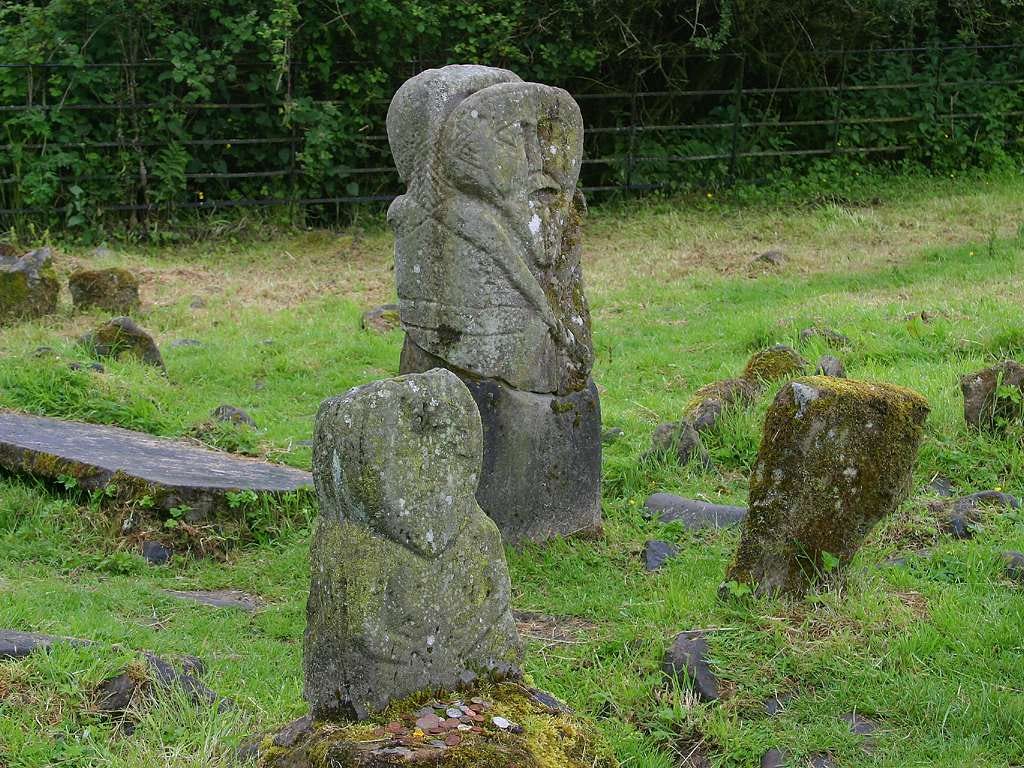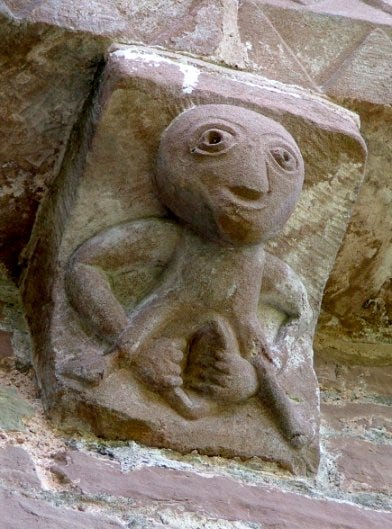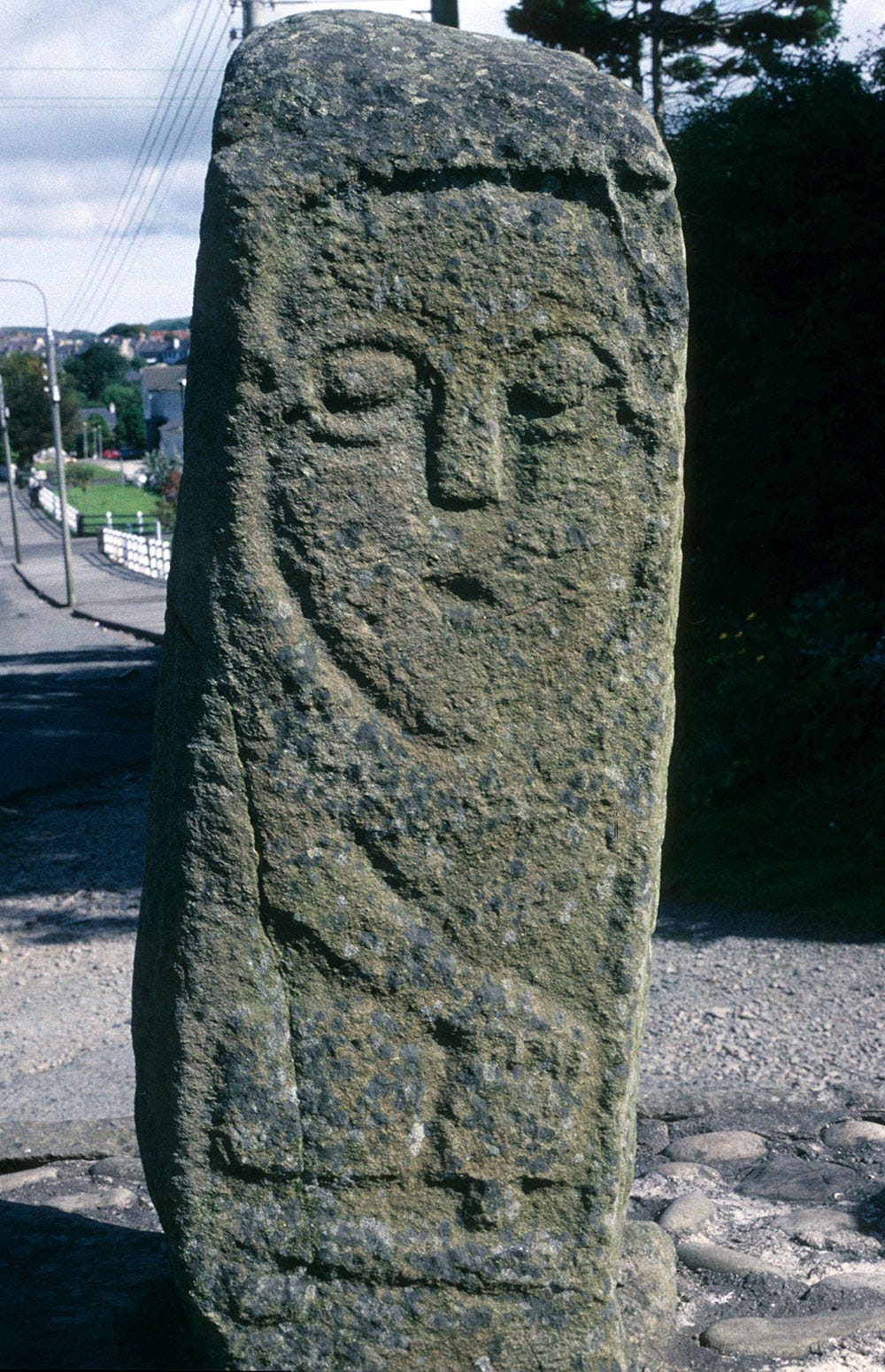Magic Mondays: The Stone Idols of Caldragh Graveyard
Add a little whimsy to your week! (06/23/2025)
Picture this: You have arrived at the cool, misty shores of the Boa Island, Lower Lough Erne, Ireland. Upon entering the Caldragh Graveyard, you spot two stone figures which stand out among the headstones. As you approach, you see offerings scattered among them: coins, smaller stones, shiny odds and ends… Are these some sort of ancient pagan idols that people still worship today?

The re-discovery of the Dreenan and Lustymore idols can be traced to a 19th century painter, George Victor Du Noyer, who featured one of these figures in a series of pencil sketches from 1841. But an interest in these figures wouldn’t take off until the 1930s when one woman, Lady Dorothy Lowry-Corry, wrote about them in a paper titled “The Stones Carved with Human Effigies on Boa Island and on Lustymore Island, in Lower Lough Erne”. Her writing would bring these figures’ attention to the Royal Irish Academy—Ireland's leading body of experts in the sciences, humanities and social sciences. From here, they were now established as historically significant and ancient objects worthy of study and preservation.
Both figures were removed from their original locations and placed in the Caldragh Cemetery where they could remain on display outdoors, while now being in an area which is easily accessible for monitoring, visitation, and further study. The larger figure, Dreenan, was initially given the approximate date of the Iron Age as the time that it was carved, but this has been much debated. You can date the age of a stone, but you cannot always date when exactly the stone was carved. The appearance of the Dreenan figure and who/what it may represent is also the topic of debate, as the worn nature of old stone makes some details hard to interpret with certainty. Dreenan is double-sided, with many believing that one side depicts a woman with her tongue slightly protruding, while the other side depicts a man with an erect penis. This duality could represent an ancient pagan god/goddess or fertility, so perhaps the worship of this idol, and the act of leaving offerings, would ensure a safe pregnancy or a bountiful crop yield.
The Dreenan figure is also referred to as the “Janus” figure. Janus is a double-faced god in Roman mythology, but there is likely no link between this particular figure and a Roman god.
Meanwhile, the smaller figure, Lustymore, is speculated to represent, or is a precursor to, Sheela na gigs: a common carved depiction of a naked woman with a very prominent vulva, possibly warning the viewer against the power of lust, or even representing pagan fertility goddesses. This may be due to Lustymore’s hands which appear to meet in the figures crotch, although just like Dreenan, exact details in the imagery are debated.

In looking for a definitive answer as to what they really are, the best we can do for the Dreenan and Lustymore figures is compare their artistic styles to other artistic styles throughout time and look for similarities, while also keeping their original locations in mind. And through the aforementioned methods, a much more likely theory has been produced: that these idols are not Iron Age or pagan, but were instead carved by medieval Irish Christians who still embraced some pagan beliefs and/or traditions. Not only were both idols originally found near early monastic sites, but they also closely resemble other carved religious figures seen from early Irish Christians, including a stone figure seem among the The Carndonagh Stones.
Regardless of who/what these idols represent and wether they are Iron Age pagan idols or early Christian figures, they have become prominent symbols in Irelands history. Irish people and tourists alike continue to take pilgrimage to these figures who remain display, although sometimes they are roped off or have a tent placed over them during times of assessment or heavy rain.
The bottom line is that we may not have a crystal-clear answer into the making and meaning of these figures and what an offering would be given to them for, but we do know that the act of leaving offerings with the Dreenan and Lustymore figures is a great means of paying homage to the past, to ancestors, and to Irelands history.
Magic Mondays is a weekly newsletter which aims at adding a little magic and whimsy to your week - from herbs to talismans, symbolism and more! Subscribe for an email notifications, and become a paid sub for access to the full Magic Mondays archive.
Written by Ivy Boyd, anthropology/archaeology student at Washington State University and co-creator of Odd Anthropology.
Sources used for this article:
https://www.tuatha.ie/boa-island/
https://www.jstor.org/stable/25515968?seq=1
https://en.wikipedia.org/wiki/Carndonagh_stones




